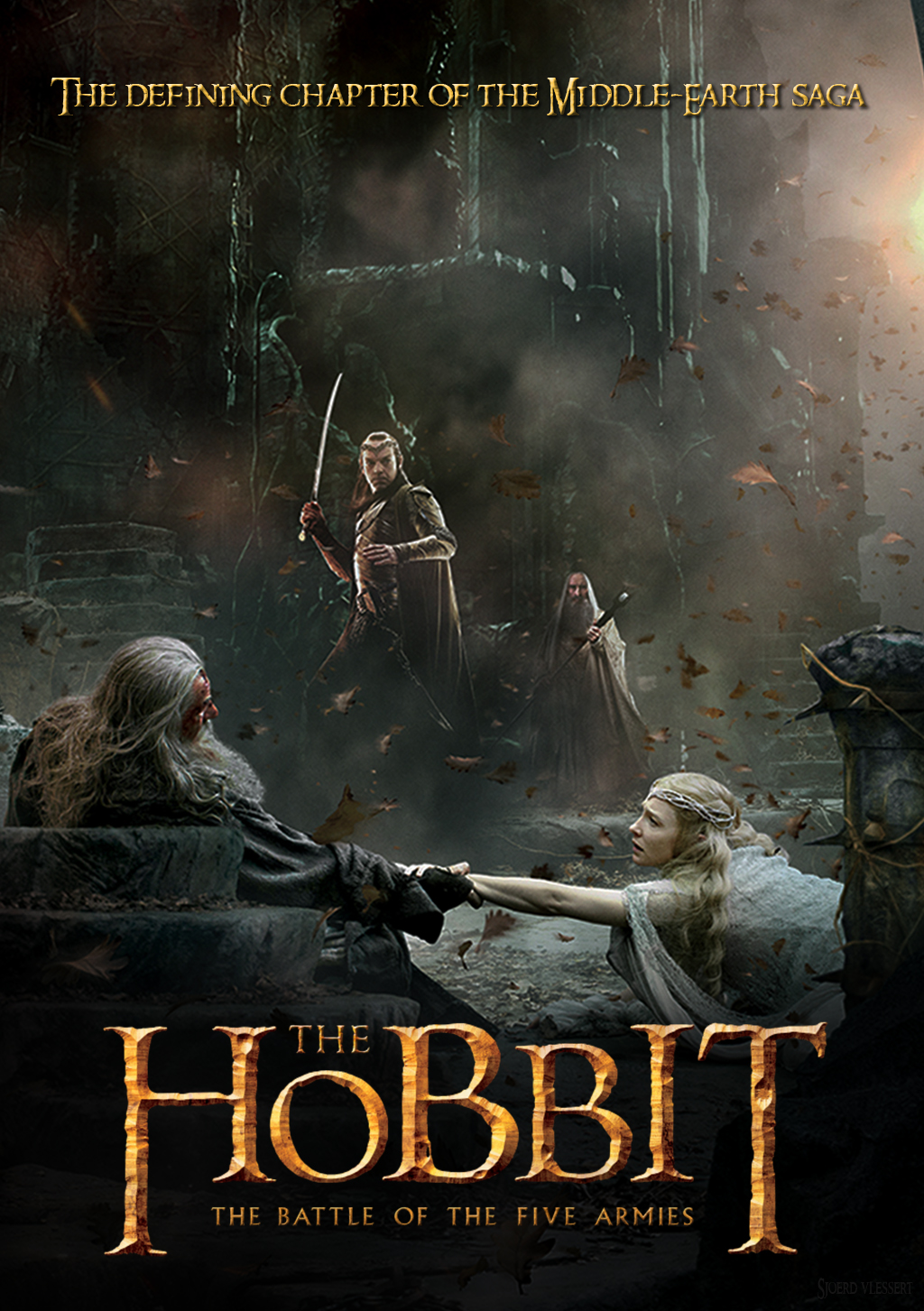In my opinion, the three Hobbit movies have been a bit of a letdown. Not necessarily in the quality of the movies, but in the experience of the films. The reason for my disappointment is because it’s hard not to compare the three Hobbit films to their predecessors, the Lord of the Rings Trilogy from the early to mid 2000’s (remember when it only took one movie to express the story of a book).

Anyone with an affinity for nerd culture owes a significant debt of gratitude to those films. Before LoTR, stories of fantasy were only appreciated by a few while being soundly dismissed by the majority. “Have fun reading those graphic novels, playing those silly board games, and dressing up for those silly comic conventions you guys go to. We’ll sit in here and enjoy our 90’s sitcoms and action hero/end of the world flicks, thank you very much,” said most of America until Peter Jackson convinced New Line Cinema to lay down between 200 and 250 million dollars on the production of three Tolkien inspired films (unheard of at the time because of the disaster a first movie flop could mean for the production company).
But then, “Fellowship of the Ring” hit the theaters. J.R.R. Tolkien’s work, only familiar to a few before, was now being experienced by the masses. And the graphics!!!! Revolutionary in its use of CGI, Jackson recreated Middle Earth on a scale that would not have been possible even five years before. “Return of the King” would take best picture at the Oscars a couple of years later. I remember walking into a packed theater at the Opry Mills 20 in Nashville on opening night as we watched the final three hour installment of Jackson’s masterpiece.
Fast forward to today and the once taboo nerd culture is all around us. Book series’ being bankrolled for multiple movies has become the norm with Hunger Games, Divergent, Twilight, Harry Potter, and some HBO TV show based on a book series I am somewhat familiar with. CGI is now expected by moviegoers (a key element, in my opinion, to the popularity of the ongoing Marvel Universe, beginning with Iron Man in 2008).
But as the final Hobbit movie is released this weekend, any buzz for its arrival is extremely muted. I am sure many will go see it and hundreds of millions of dollars will be made, but lacking is the excitement that was present for “Return of the King.” And “Battle of Five Armies” can thank its predecessor for that. The graphics in the Hobbit are spectacular, but they are in every movie now. The movie wastes no time getting right to the action, settling the previous editions cliffhanger. But it’s the third movie, and so we now expect the third of a trilogy to waste no time with plot points and pleasantries between characters. “Battle of Five Armies” is very entertaining filled with action throughout, but it wasn’t the same experience as sitting in that packed house in Nashville on opening night in 2004 when LoTR, the pioneer for modern cinema, finished its run.
Now, if you can forget what you experienced a decade ago, treat “Battle” as its own stand- alone experience, then you will still enjoy this picture. When we last left Bilbo and his dwarf friends, they thought they had killed Smaug, the dragon who was sitting on Thorin Oakenshield’s treasure. But Smaug escapes, and we are left with a cliffhanger: Smaug is free and ready to wreak havoc on Dale, the village inhabited by men close by. As a book reader, I appreciate Jackson playing out in real time important scenes that Tolkien, for some odd reason, chose not to.
Tolkien told the tale of Smaug’s attack on the city of Dale in a flashback. But Jackson opens “Battle” with a conclusion to this as well as Gandalf’s dealings with the Necromancer. Once again, this is another issue Tolkien chose to deal with off the pages of the book, having Gandalf disappear for half the book to deal with it, only to come back later and say, “It’s taken care of.” The Necromancer scene also sets the stage for the events in LoTR just like any good prequel should do.

The rest, and most significant part, of the movie deals with the battle. Recall that throughout the trilogy, the dwarves, on their way to reclaiming their gold, have angered orcs, goblins, elves, and men. All these groups are heading to the mountain the dwarves are sitting in to settle each of their particular grudges. While the first LoTR movies had very clearly defined good guys and bad guys, the third Hobbit movie does not (at least not when all these groups first converge). I like the range of emotions the different characters express in the events leading to and events that happen throughout the battle. Each group has their own selfish interests in mind, which is far more realistic than the good vs. evil fight to save the world in “Return.” I did feel as if some characters (and the overall conclusion of the battle) were shortchanged as the battle scene wound down towards its conclusion. But the goal of a movie is to entertain. And “The Battle of Five Armies” does that, even if any buzz it creates blends in with all the other noise from all the other series movies LoTR helped originate.
(Editor’s Note: This review was written by Jeff Merrick.)

